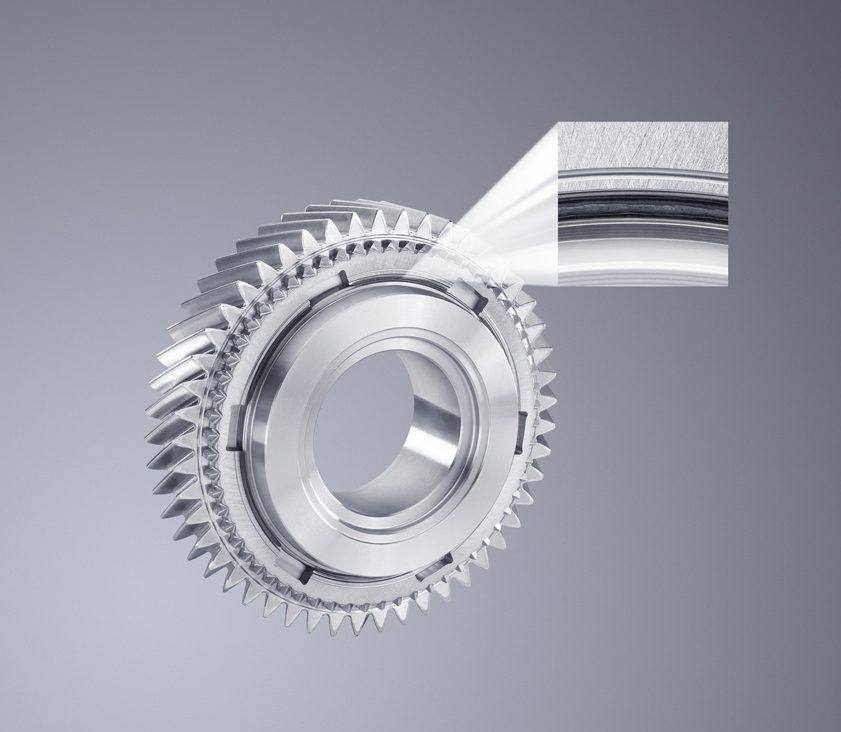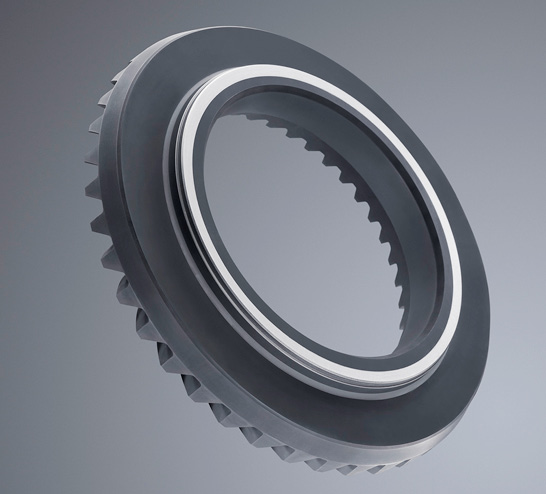TRUMPF has been manufacturing for nearly a century but lasers energized the company’s mission, changing it forever.
“In the late ’70s, we made one of the most important decisions in our company’s history, which was to develop laser technology,” said Ralf Kimmel, general manager and head of the Laser Technology division at TRUMPF Inc. “Cutting 2D sheet metal was not easy. At that time, it was only done with punching tools. However, we soon realized the potential that lasers had for cutting sheet metal, and in 1985, TRUMPF launched its first CO2 laser. This epiphany would dramatically change the company in a positive way, and now we have a second business division dedicated solely to laser technology.”
Currently TRUMPF is one of the largest laser manufacturers in the world with annual revenue of about 3.1 billion euros, according to Kimmel.
“We have approximately 12,000 employees and about 60 subsidiaries all over the world,” he said.
Lasers lead to gears
It was TRUMPF’s advancement in laser technology that bolstered the company’s offerings for gear manufacturing applications.
“Laser welding creates a lot of advantages in gear manufacturing,” Kimmel said. “We are able to weld high-carbonized material using lasers, so it offers additional joining capabilities. Using laser technology, TRUMPF entered the gear industry with powertrain welding. It contains a lot of applications, and it is an important market for the Laser Technology division.”

TRUMPF was the first company to use the technology to weld differential gears without filler wire by the 1.5% C-effect, he said.
“The differential gear has a cast part made out of high carbon content, and it needs to be joined with the ring gear that’s made of case-hardened steel,” Kimmel said. “Typically, these two parts can’t be welded together without filler wire. The use of the filler wire increases the complexity in production and needs permanent maintenance. The traditional way to put together a differential gear was through bolting the pieces together. However, our R&D team developed a process where high-carbonized steel can be welded without filler wire, and this increases productivity and makes machines easier to handle.”
The high carbon content contribution of the cast iron normally leads to hardness cracking within the weld seam, according to Kimmel. At a defined melt-pool mixture (resulting carbon mixture 1.5 percent), hardness values drop below 400 HV. Since the melt-pool mixture cannot be measured directly within the production environment, the process is controlled indirectly with highly accurate positioning of the laser spot that’s relative to the weld joint with a real-time sensor-system. The challenge is a very precise positioning of the laser beam and having a very small process window. But with this solution, the availability of the process stays at a high level by doubling productivity and creating higher parts quality.
TRUMPF BrightLine Weld
But TRUMPF never settles. The company continues to develop innovative technologies that will help customers get the most from their equipment, according to Kimmel.
Brightline Weld, a welding technology developed and patented by TRUMPF, allows a user to weld metals at double the speed or at double the welding depth.
“This is possible because of the new beam shaping,” Kimmel said. “Beam shaping needs some special equipment, but not a lot. We are creating a different optical setup for BrightLine Weld, which achieves higher speeds with less power. These changes result in better productivity and lower costs.”
TRUMPF also offers laser marking and surface treatment as additional applications.
“Today, every gear has to be marked with an individual code,” Kimmel said. “This can be done with laser marking systems, which we offer as well. Many welding operations require a cleaning process before joining and welding, and this can be done with processes developed by TRUMPF.”

Turnkey and OEM supplier
Kimmel said TRUMPF can operate as a turnkey supplier, delivering products such as machine laser guidance optics, clamping devices, quality measurement, and even automation.
“We don’t do this for all the applications,” he said. “A differential gear is a typical project where we have all the necessary handling devices and system requirements, but there are some applications where our machine solutions do not fit the requirements.”
The company can also operate as an OEM supplier for other machine integrators. TRUMPF will deliver laser sources, beam guidance, fiber optics, or central systems. An integrating company then completes the handling and automation, according to Kimmel.
A big part of TRUMPF’s philosophy is making sure the buyer knows how to get the product to perform perfectly for them.

“We have a philosophy at TRUMPF where we expect everything related to our equipment to operate well — we call this horizontal integration,” Kimmel said. “We don’t simply sell a product to an integrator and then move on. We work with the integrators to ensure our products deliver the consistent and quality results our brand is associated with that customers expect. We try to understand the integrator’s processes. This dedication to excellence is what separates us from others in the industry. Proper horizontal integration of our key technologies requires that we deliver what the customer expects at the end, every time. Customers don’t care about the beam quality of a laser or how a welding optic really works. They want a specific part to be integrated into their systems, and then they want to achieve a specific productivity level and quality requirement. If the quality and productivity is what the customer expects, he or she shouldn’t care about the details of how to do that.”
Working with customers
Kimmel said providing the right fit for a customer starts with understanding the application.
“As an example, principle laser welding or marking assessments are always the first step in developing a project with a customer,” he said. “We have highly skilled application engineers in our own laser labs who take sample parts. We have equipment for various processes like gear joining, welding, and marking. Then we do fundamental tests on sample parts for all the customers.”
After understanding the application and the production requirements that are set by the customer, TRUMPF specifies certain elements such as productivity, part count, and automation levels. Based on this specification, the next step is to develop the proper system, according to Kimmel.
“Then you have various options,” he said. “The customer may want to bring in a specific integrator, turnkey supplier, or automation company. We often do a three- or four-party development of the project. We cooperate with the automation deliverer, and we are developing, step-by-step, the right system solution. After having this in place, we take over project management as a standout service for our customers: manufacturing, assembly, delivery, and onsite application support for startup and production.”
The future
As TRUMPF nears the century mark (it was founded in 1923), it will continue to focus on lasers, beam guidance, and optics, where there is constant ongoing development.
“About 70 percent of our products are newer than two years,” Kimmel said. “This gives you an indication of how much innovation is in the laser industry. The most important development is that new central technologies are entering the market. Central technologies are so fast and accurate that it is possible to look online at the welding process and into the keyhole to control your welding depth, which is fantastic.”
Kimmel said he expects TRUMPF to make headways into new powertrain manufacturing applications.
“For example, electric cars are challenging all the powertrain manufacturers with new requirements for gears and transmissions,” he said.
Connectivity, or condition-based services, will rely on new capabilities to connect to a machine with software tools designed to evaluate massive amounts of data, allowing for better control of production units, performing constant online analysis of machines and recognizing failures before the machine fails, according to Kimmel.
Kimmel eyes the future optimistically.
“This is a very important new business field, which offers a lot of opportunities, and TRUMPF is developing a lot of products,” he said.
For more information www.trumpf.com




























